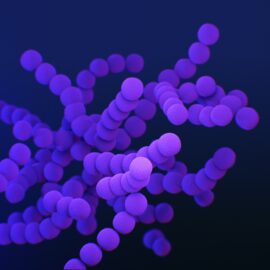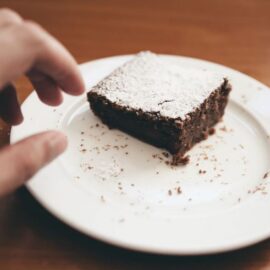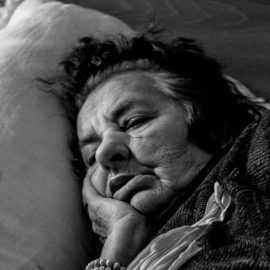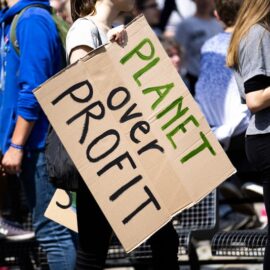
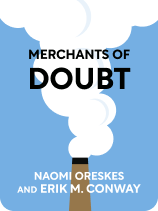
This article is an excerpt from the Shortform book guide to "Merchants of Doubt" by Naomi Oreskes and Erik M. Conway. Shortform has the world's best summaries and analyses of books you should be reading.
Like this article? Sign up for a free trial here .
What is the history of the debate surrounding the insecticide DDT? What doubts were raised? Were they legitimate?
In 1972, the EPA banned the use of the insecticide DDT in the U.S. Despite this, certain individuals and organizations kept the controversy alive by manufacturing doubt about the underlying science. In Merchants of Doubt, historians Naomi Oreskes and Erik Conway tell the story.
Read more to learn how the merchants of doubt engaged in the debate surrounding DDT.
The Insecticide DDT and the Doubt-Mongering Campaign
Often, merchants of doubt (MODs) created a debate around emerging and unregulated issues to halt or at least delay government interference. In the case of the insecticide DDT, the MODs manufactured doubt when the issue first came up, but they also reprised their doubt-mongering years later, after the matter had been settled and DDT had been banned for years in the U.S.
The goal of the second DDT doubt-mongering campaign was to:
- Convince people that past government regulation was a mistake. If banning DDT had caused harm, MODs could make the case that regulation was a bad idea in general.
- Convince people that the shift in U.S. environmentalism from defending the beauty of nature to regulation was a mistake. Again, if regulating DDT was a mistake, then perhaps the whole shift had been a mistake.
They weren’t trying to get DDT unbanned—it wasn’t even an effective pesticide anymore—they were just trying to defend free-market forces.
Discovery of Problem #1: DDT Creates Resistance in Insects
The chemical DDT (dichlorodiphenyltrichloroethane) was first invented in 1873, but no one was particularly interested in it. When chemist Paul Müller resynthesized it in 1940, scientists realized that DDT was an effective pesticide and could kill the insects that spread diseases, such as mosquitoes that carried malaria. It seemed perfect—it was cheap, easy to use, and seemed to have no side effects on humans.
In 1947, mosquito control workers in Florida reported that the usual application of DDT was no longer working—the mosquitoes weren’t dying. This was because they’d become resistant. When an insect population is exposed to a pesticide, only the bugs that are naturally resistant survive. Therefore, these resistant bugs are the only ones that breed and pass on their resistant genes to their offspring. With each generation, more and more resistant mosquitoes are born. In just a few years, a whole population can be resistant. (It would take 7-10 years for DDT.)
The insecticide DDT also had mixed results when it was used as part of the Global Malaria Eradication Campaign. From 1955-1969, the World Health Assembly and the U.S. sprayed indoor surfaces and walls with DDT and other pesticides. This spraying helped end malaria in Australia and Europe and reduced it in parts of Latin America and India, but wasn’t very effective in less developed areas.
Spraying failed for three reasons:
1. Spraying wasn’t the only factor that eliminated malaria. Health care, education, nutrition, and reducing mosquito breeding grounds were also important, and the less developed countries didn’t always have these supporting factors.
2. For spraying to work, the pesticide needed to remain on the walls, so people couldn’t wash them or refinish them. Many people didn’t understand or like this—it conflicted with other public health instructions and made their homes feel dirty.
3. As they had in Florida, mosquitoes were becoming resistant. Indoor spraying doesn’t produce resistance quickly because only a small percentage of the mosquito population (the ones that get into buildings) are exposed to DDT. However, in many of the regions that used indoor spraying, DDT was also used outdoors for agriculture. (It was less toxic than other pesticides in use at the time and could be sprayed from airplanes, which was much more economical than other pest-control methods like clearing brush or draining swamps.) This widespread outdoor spraying exposed most of the mosquito population, so it quickly developed resistance.
Discovery of the Problem #2: DDT Is Harmful to the Environment
Besides creating resistant insects and ceasing to work, DDT had another problem: It was harmful to humans and the environment.
The first people to realize that DDT was damaging the environment (besides possibly government scientists whose wartime work was classified) were scientists at the U.S. Fish and Wildlife Service, notably Rachel Carson. Carson was a biologist and found reports of damage to fish and birds from DDT in government reports or obscure journals. She also found circumstantial evidence that pesticides might be dangerous for people as well. (Carson thought DDT likely caused cancer, but there was little study on human effects, so she made no quantitative claims).
Carson wrote about the dangers of pesticides in a 1962 book called Silent Spring. The Silent Spring book covered several pesticides and spent a lot of time on DDT because it bioaccumulated. Bioaccumulation is when a substance that takes a long time to break down travels through the food chain and concentrates at the top as organisms eat other organisms that have been exposed to it. (Shortform example: A small fish might eat one unit of DDT. A medium fish might eat three of the smaller fish, ingesting three units of DDT. A large fish might eat five medium fish, ingesting 15 total units.)
In addition to bioaccumulation, the Silent Spring book discussed other problems with pesticides:
- Animals, including pets, died in the regions where DDT was sprayed.
- DDT interfered with the reproductive systems of birds, including eagles.
- When beetles were sprayed to reduce the spread of Dutch elm disease, DDT killed the beetles’ predators, which only encouraged the beetles’ spread.
- Dieldrin and aldrin, two other common insecticides, were toxic to mammals in high quantities, so DDT might be too.
The year 1962 was around the time U.S. environmentalism shifted from preservation to regulation, and Carson was a major player in this reorientation because she pointed out that putting aside land wasn’t much use if all the animals were dead, and birds didn’t sing in springtime.
The MOD’s Response
The pesticide industry attacked Carson. They accused her of being hysterical, claimed her science was uncertain and bad, and they threatened to sue her publisher.
Other scientists opposed the book as well. Food scientists, who knew the agricultural benefits of the insecticide DDT, and chemists, who liked to believe pesticides weren’t dangerous if applied properly, didn’t agree with her conclusions. Former university chancellor Emil Mrak testified that Carson’s work didn’t match the scientific consensus.
In this case, the public didn’t respond well to the doubt-mongering. The controversy increased the sales of Carson’s book, and accusing a woman writer of being “hysterical” offended feminists.
Further Exploration of the Science
President Kennedy asked the President’s Science Advisory Committee (PSAC) to look into the insecticide DDT in 1962. There was plenty of uncertainty—there wasn’t much available research on DDT’s effect on the environment, and most of the discussion around pesticides in the U.S. was concerned with efficiency and contamination of food.
The PSAC found that even when pesticides were applied properly, they were damaging the environment. This environmental damage would ultimately hurt humans—for example, DDT killed beneficial insects. The PSAC didn’t claim that the dangers were well-understood and called for more research.
The PSAC also called for policy action—while the exact dangers were unknown, they were potentially substantial. The PSAC called on those who wanted to use pesticides to provide most of the proof that they were safe beyond reasonable doubt, similar to how the 1938 Food, Drug, and Cosmetic Act required manufacturers to prove their products were safe before selling them.
There were at least three more federal studies.
Policy and Public Action
In 1972, the Environmental Protection Agency (EPA) banned the use of DDT in the U.S. because it harmed the environment (not because it harmed humans—it was still unknown whether it was a carcinogen). The ban was supported by the public and both political parties, and it included exceptions for public health emergencies.
Further Exploration of the Science
Scientists kept studying how pesticides harm humans, and two important studies looked at the effects of the insecticide DDT on humans:
1. Dr. Babara A. Cohn found that women who had been exposed to DDT had a higher risk of breast cancer. She discovered this by studying women who had been in a pregnancy study in the 1960s, which meant they had been children or teenagers when DDT was used widely in the two decades before. Their blood samples still existed and Dr. Cohn reanalyzed them to check DDT levels and then looked for a link with breast cancer rates. The women who had high DDT or its metabolites had a five times higher risk of breast cancer. (Most other studies of DDT and breast cancer were completed after DDT use had fallen off, so the subjects probably didn’t have high exposure).
2. A paper in the Lancet found that the insecticide DDT contributes to child and infant mortality. Exposure to DDT can cause premature births, birth defects, and DDT in breast milk can cause early weaning and shorter lactation (both of which increase child and infant mortality). The study concluded that if DDT had been used and saved more people from malaria, it would have killed others from developmental interference.
The MOD’s Response: 2007 Reprise
In 2007, decades after things were settled, the merchants of doubt started accusing Carson of being wrong about DDT. The MODs claimed there wasn’t any good science to support the ban and that DDT was the only good way to kill mosquitoes.
Some of the notable players were:
- Bjorn Lomborg, who said that using DDT to control disease and augment the food supply would have saved more people than DDT would have harmed.
- Dixy Lee Ray, who wrote that abandoning DDT in Sri Lanka had increased malaria. Her book misrepresented the events—malaria had increased in Sri Lanka in 1968, but it didn’t have anything to do with Carson or the U.S. ban. Malaria increased not because the Sri Lankens stopped using DDT—they kept using it, but mosquitoes were resistant, so it had little effect.
- Steve Milloy, who called Carson a mass murderer—DDT killed malaria-carrying mosquitoes and because Carson had gotten it banned, millions of Africans had contracted malaria and died.
All of this was untrue:
- People in the U.S. had voluntarily slowed their use of the insecticide DDT in 1959 because it was no longer effective, and the global malaria eradication campaign ended in 1969, which was years before the U.S. even banned DDT.
- DDT isn’t the only way to fight malaria. For example, In the 19th century, malaria was rampant in some of the southern states and even California. Settlers got rid of by draining swamps, destroying breeding grounds, moving away from breeding grounds (urbanization), and using other pesticides. By the 1930s, U.S. malaria was mostly under control.
- The U.S. DDT ban only applied to using DDT in the U.S. U.S. manufacturers could continue making DDT and selling it outside the country.
Even though the MOD’s claims were false, mainstream newspapers published them. For example, the New York Times’s John Tierney claimed that Carson’s science was bad, and an agricultural bacteriology professor named I.L. Baldwin had it right but was ignored because he was calm, unlike Carson who was hysterical. (Baldwin hadn’t written a paper—he’d written a review of the Silent Spring book. He complained that Carson’s book wasn’t balanced and he wished it had instead talked about how science and pesticides were improving our lives and could fix world hunger.)

———End of Preview———
Like what you just read? Read the rest of the world's best book summary and analysis of Naomi Oreskes and Erik M. Conway's "Merchants of Doubt" at Shortform .
Here's what you'll find in our full Merchants of Doubt summary :
- How doubt-mongering techniques are used to discredit those who threaten a person or company's agenda
- The 10 most common doubt-mongering techniques
- Steps you can take to protect yourself from doubt-mongering

